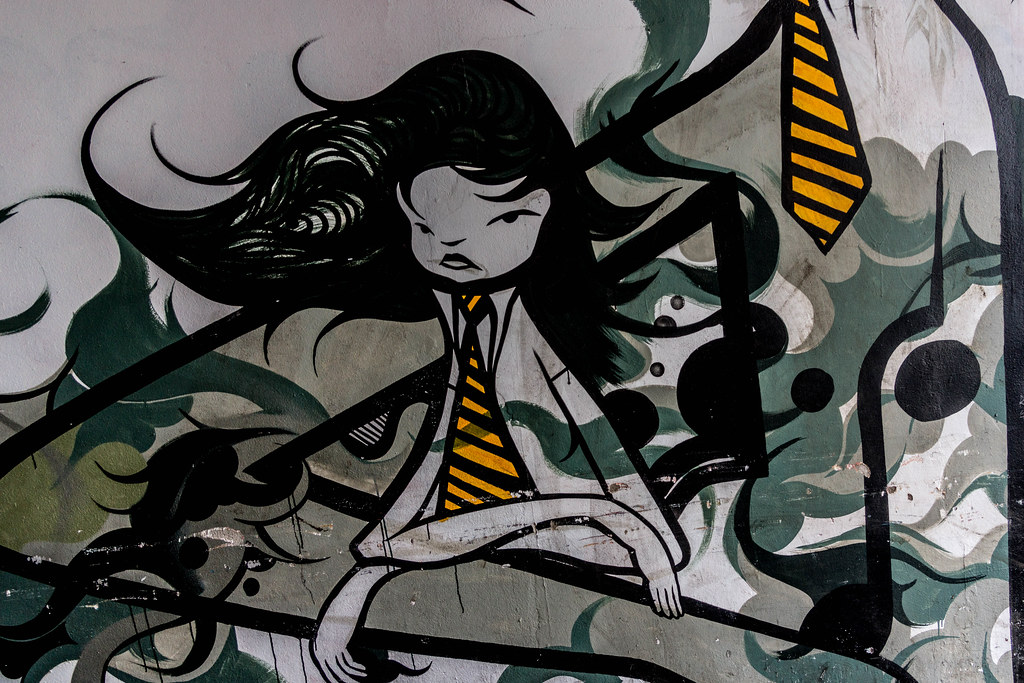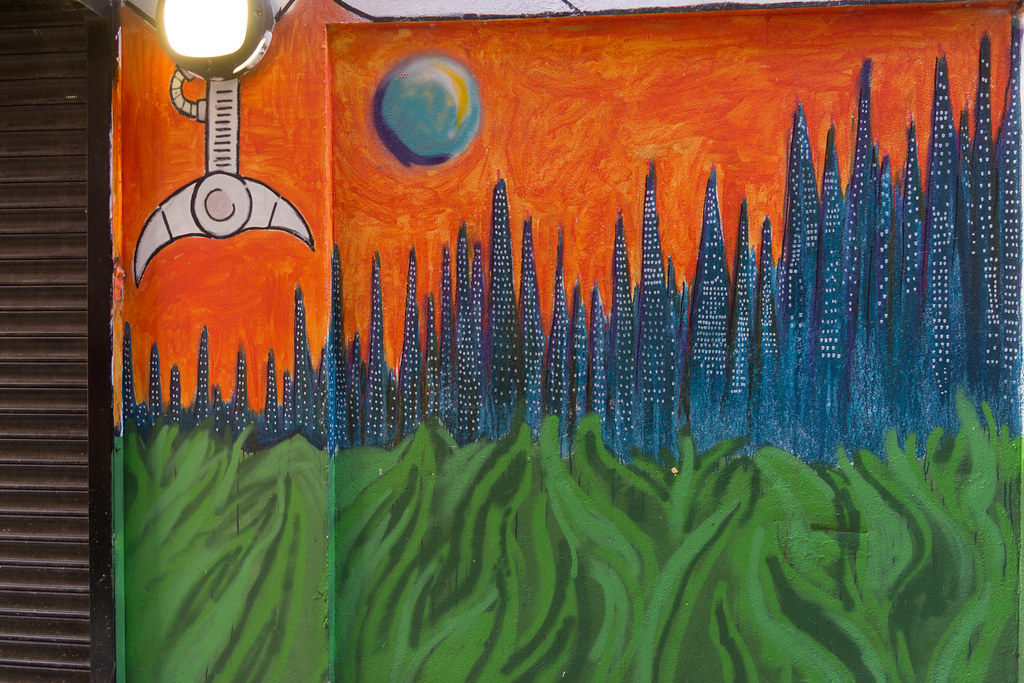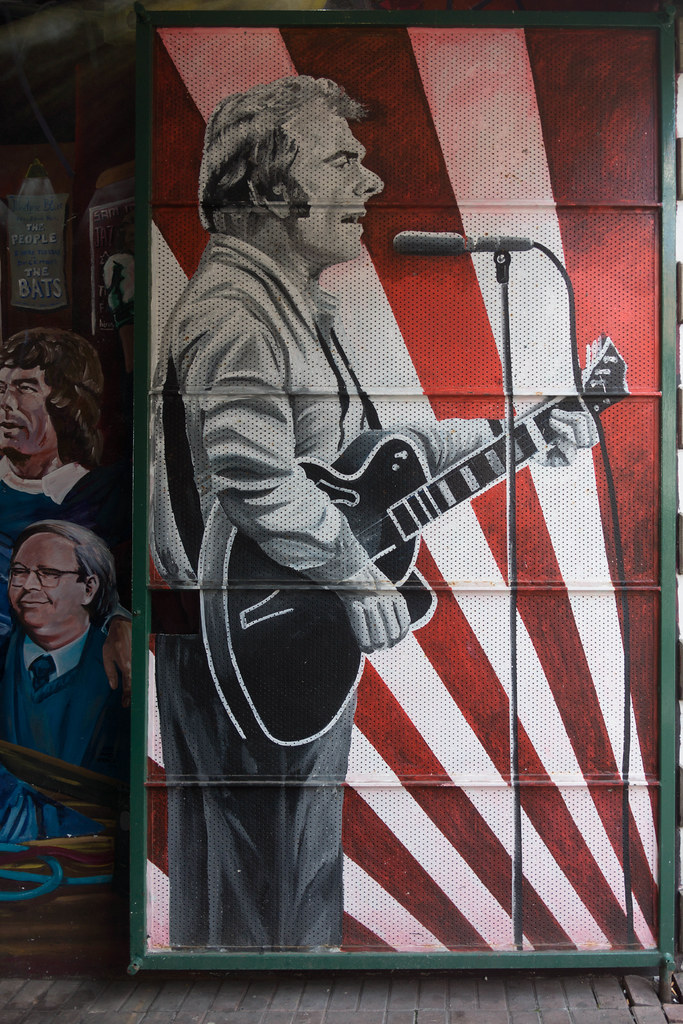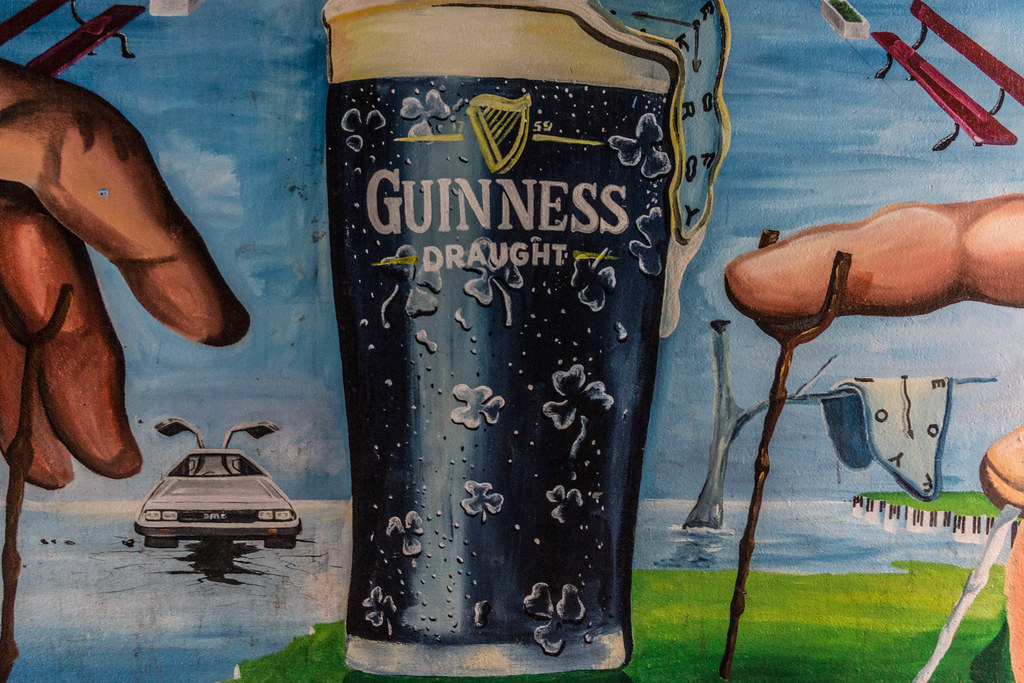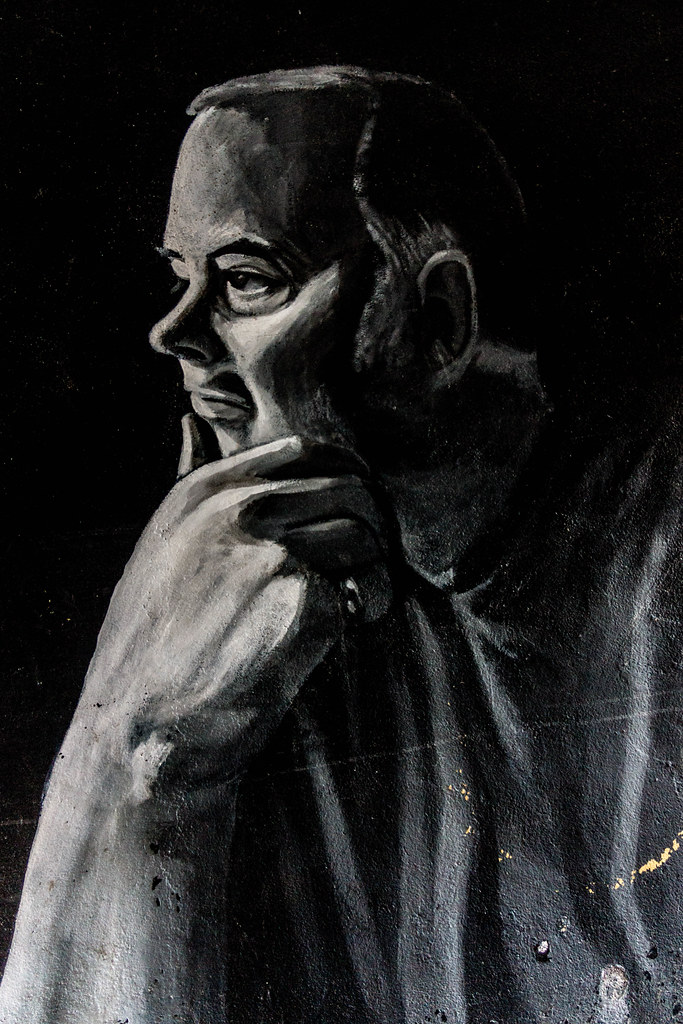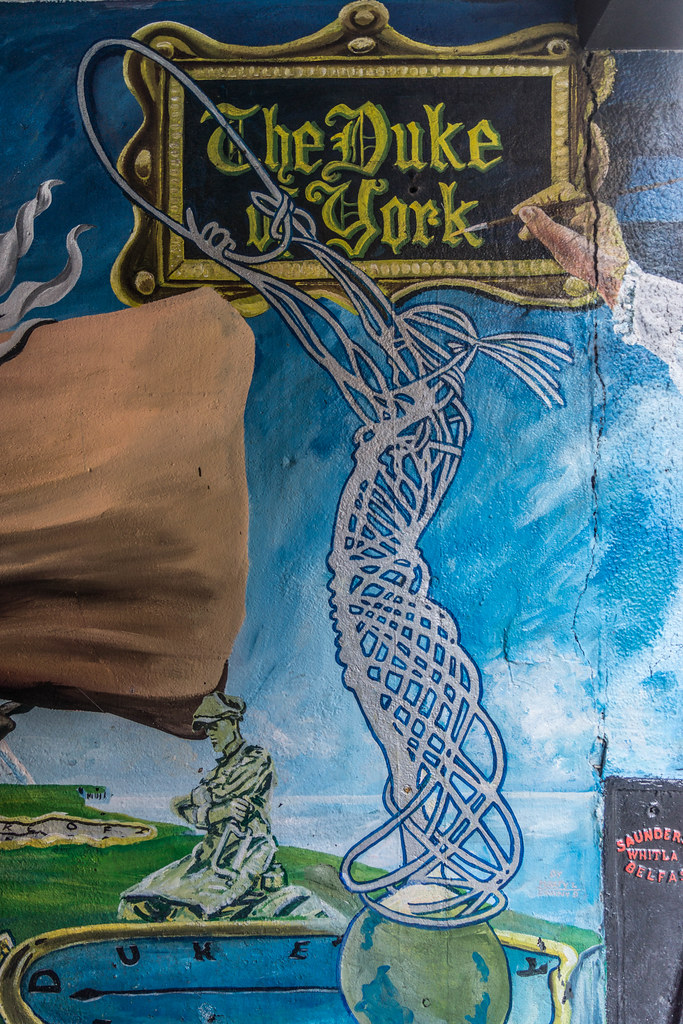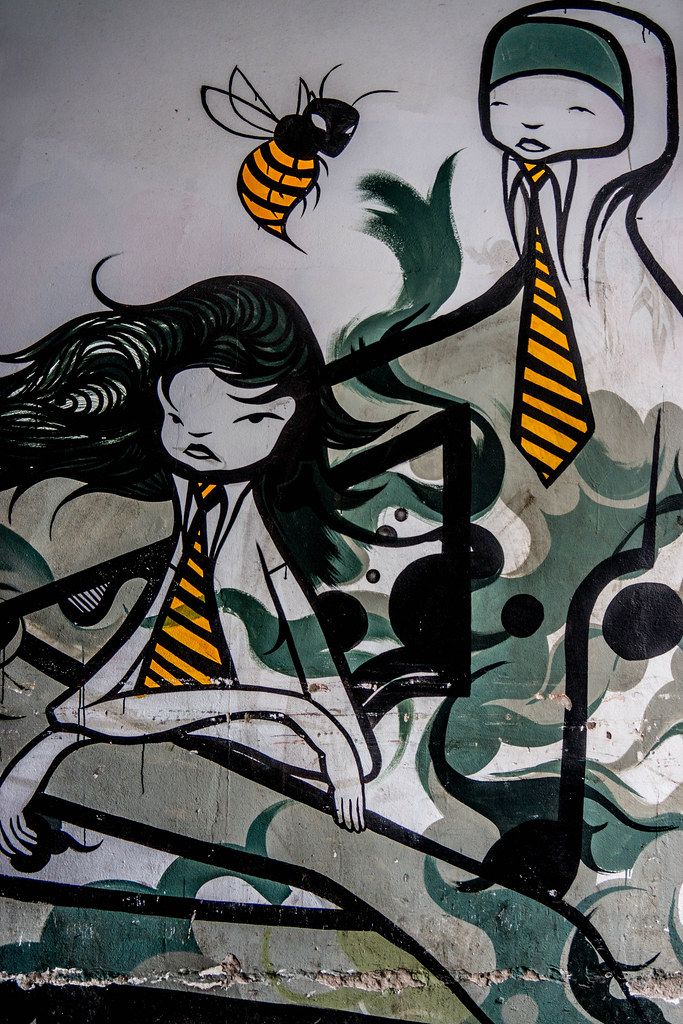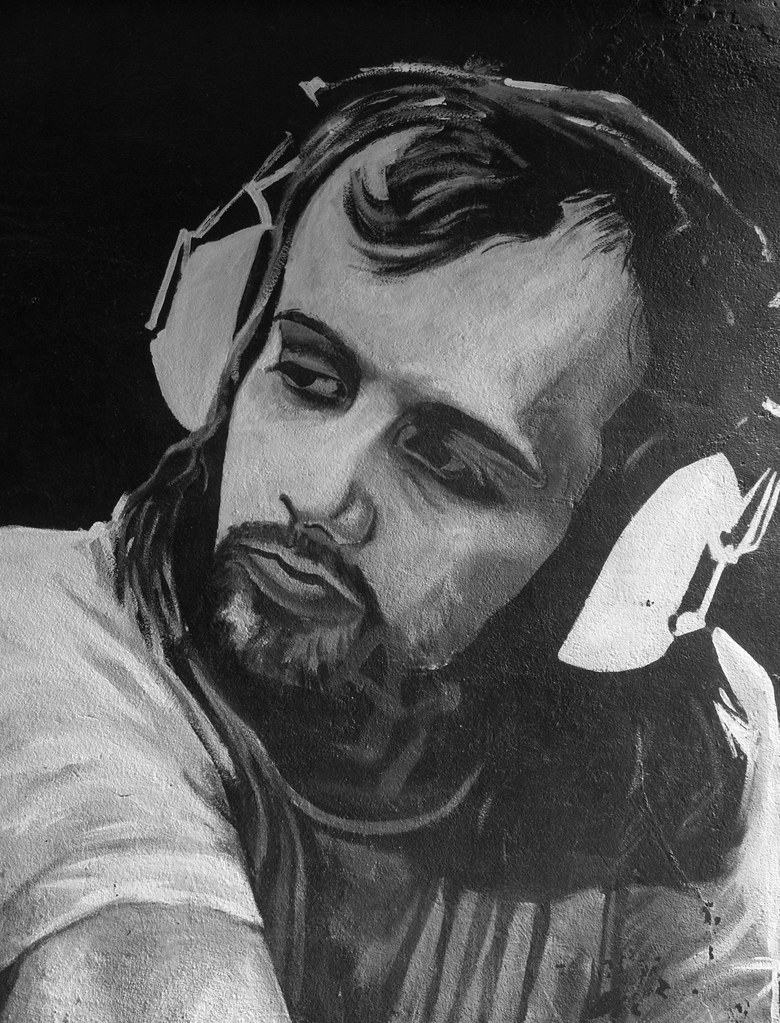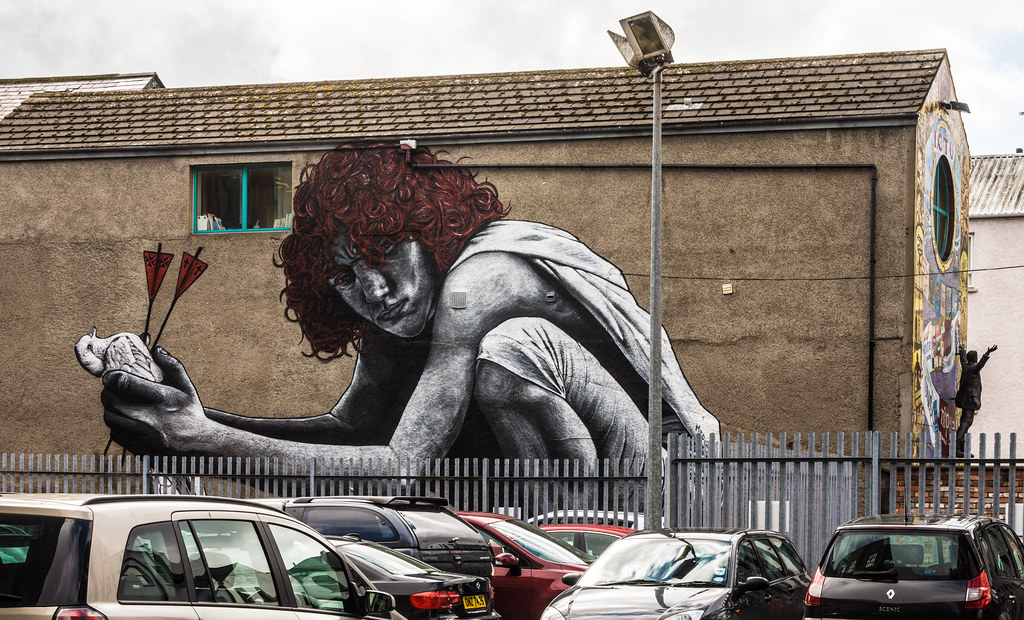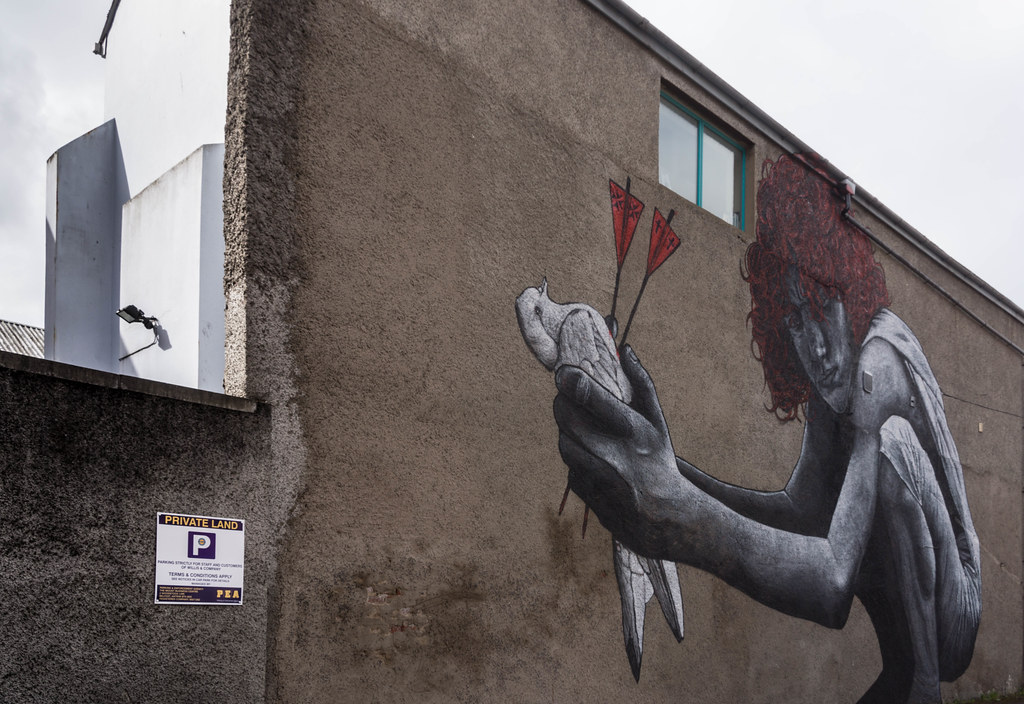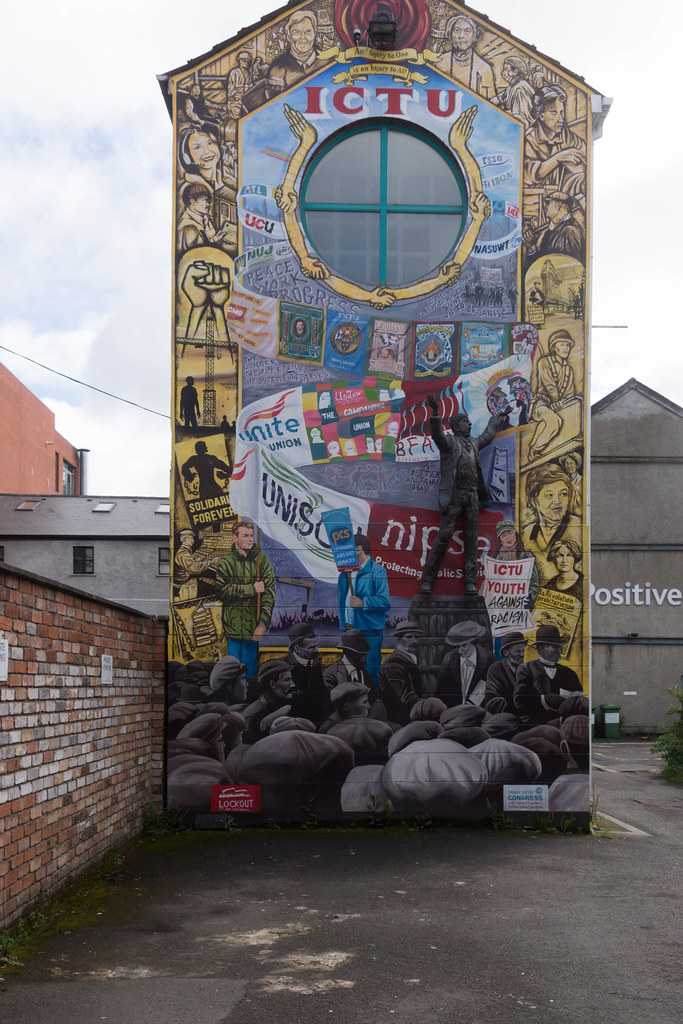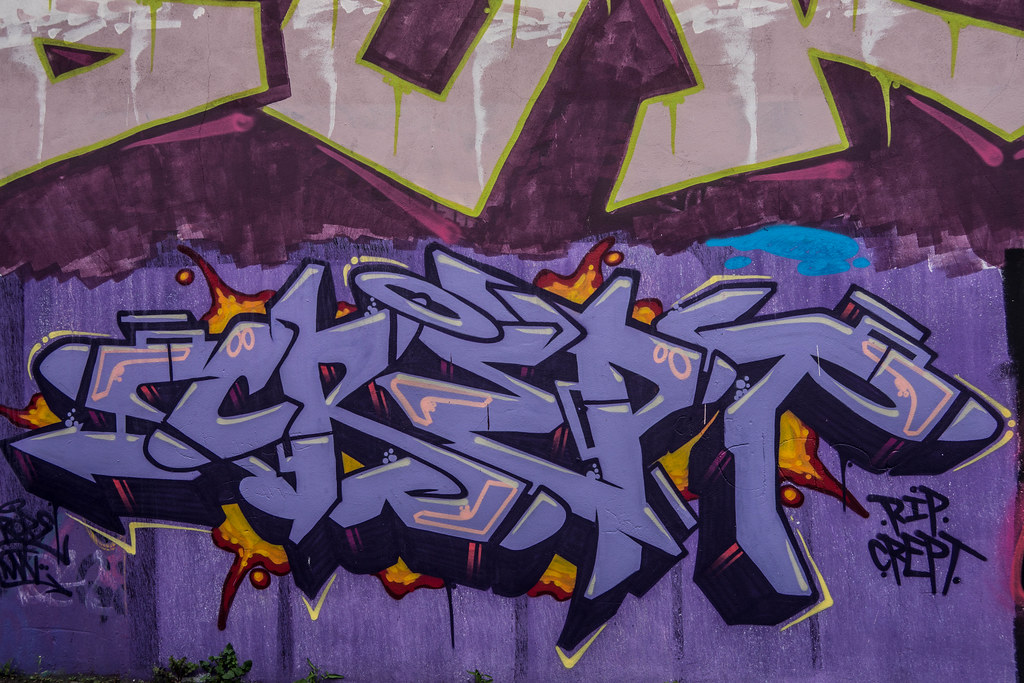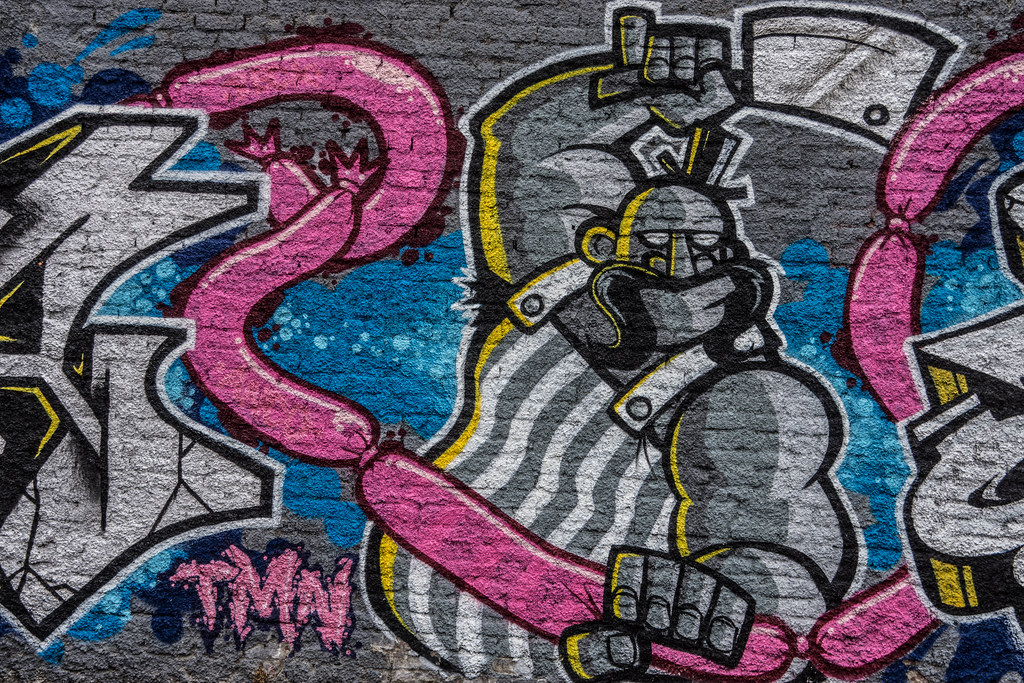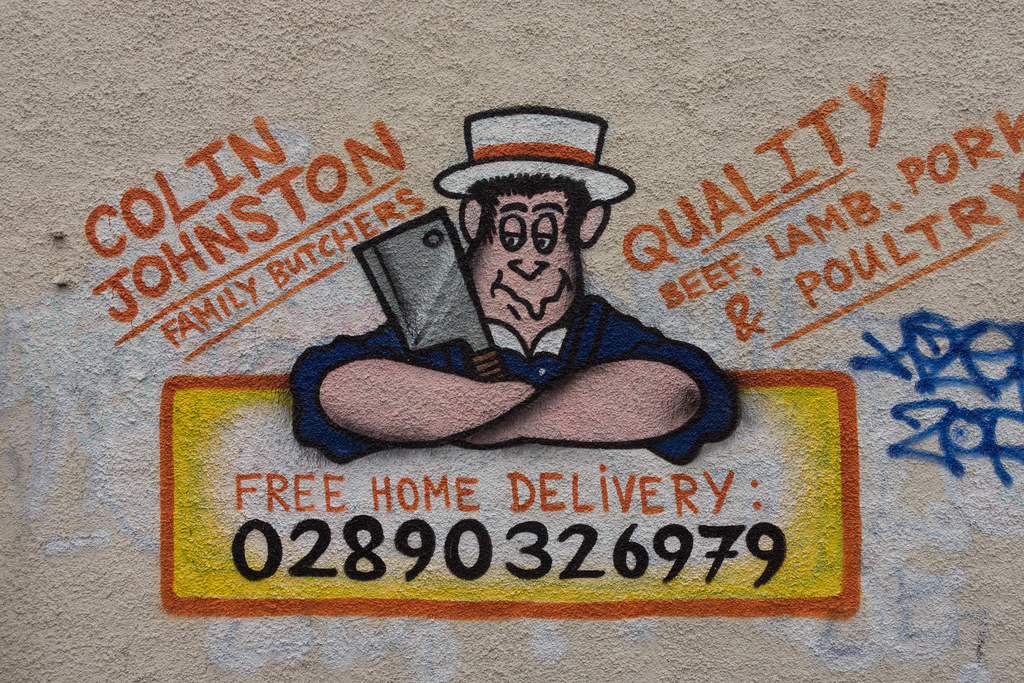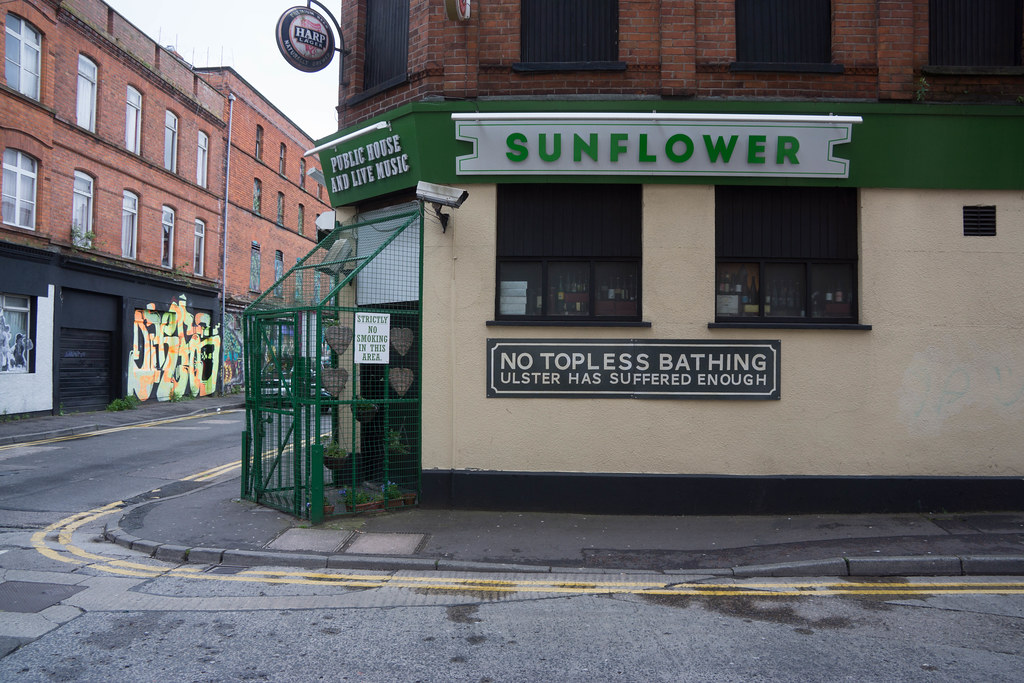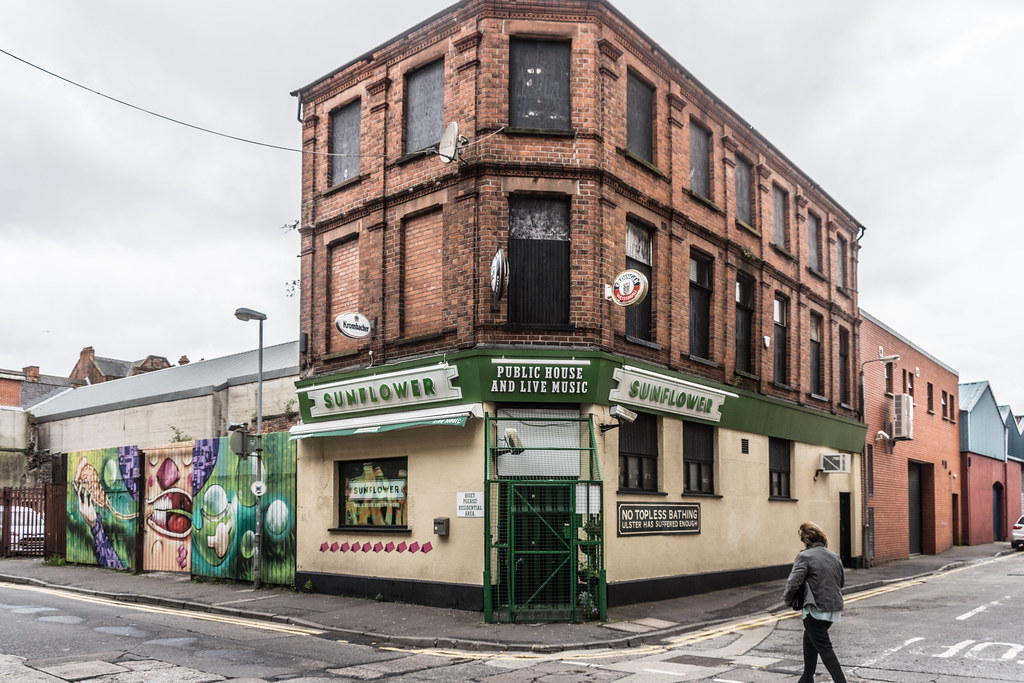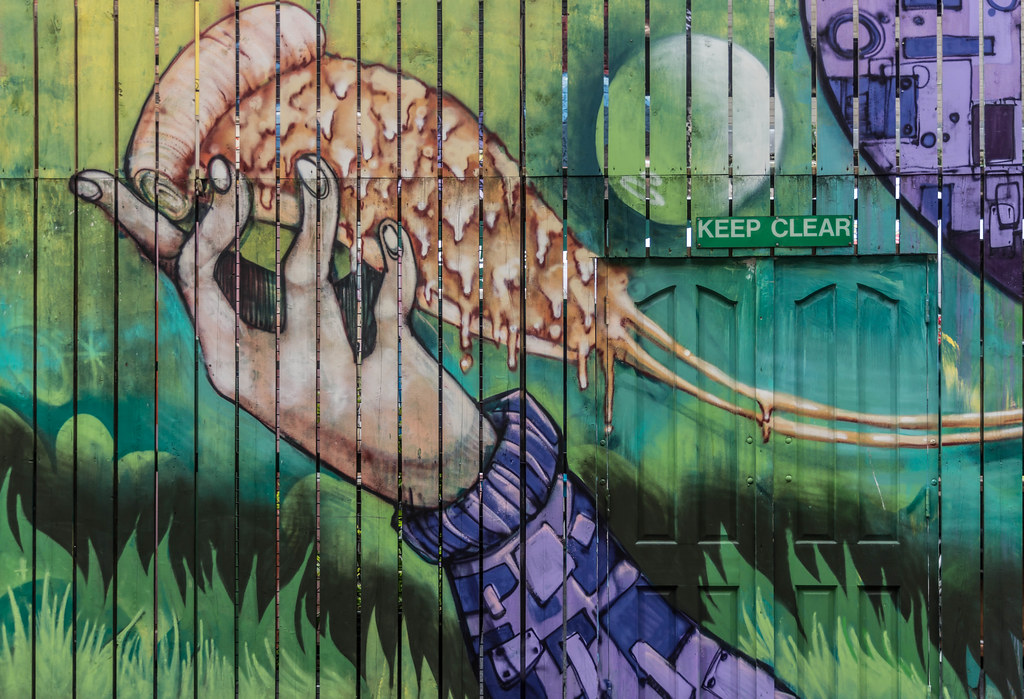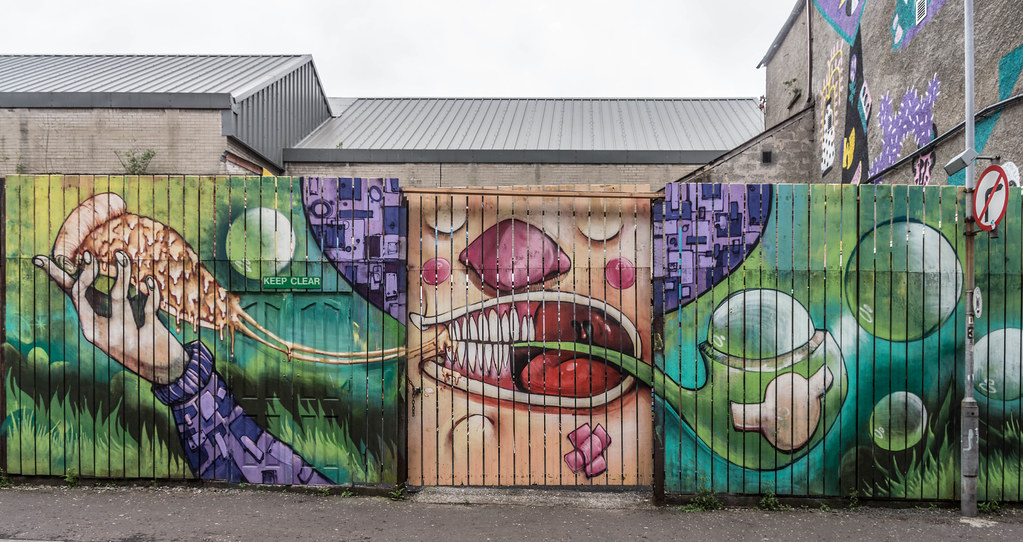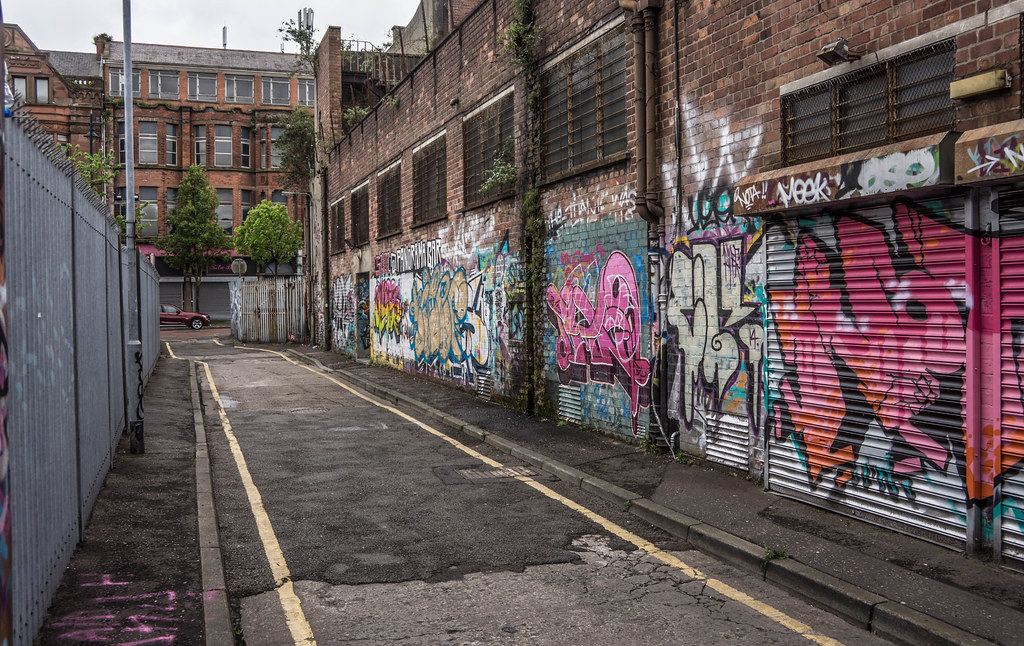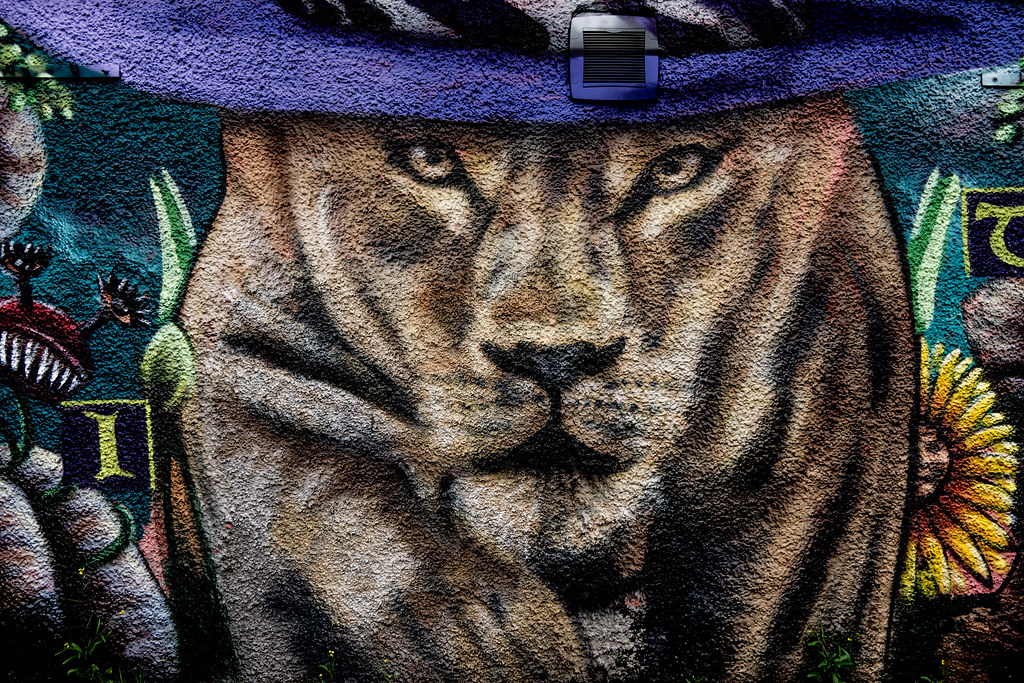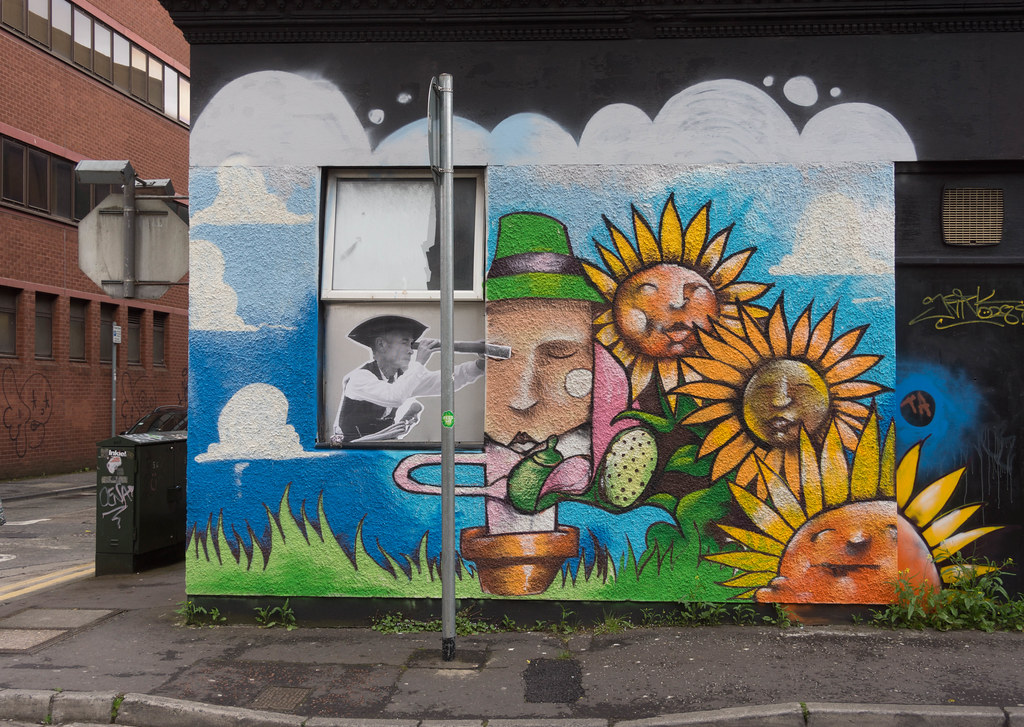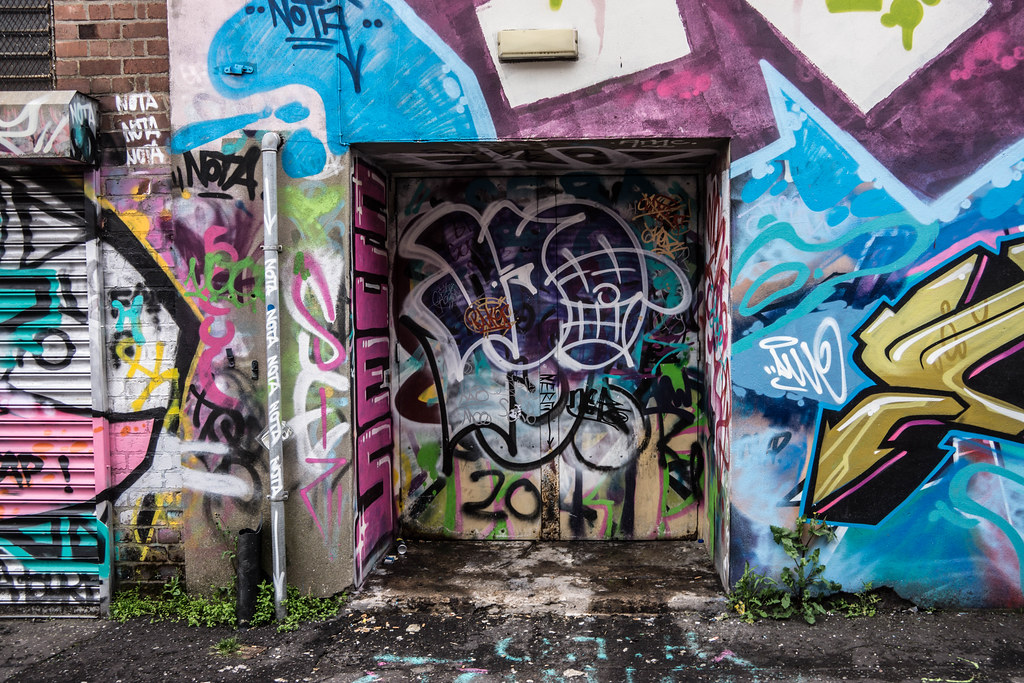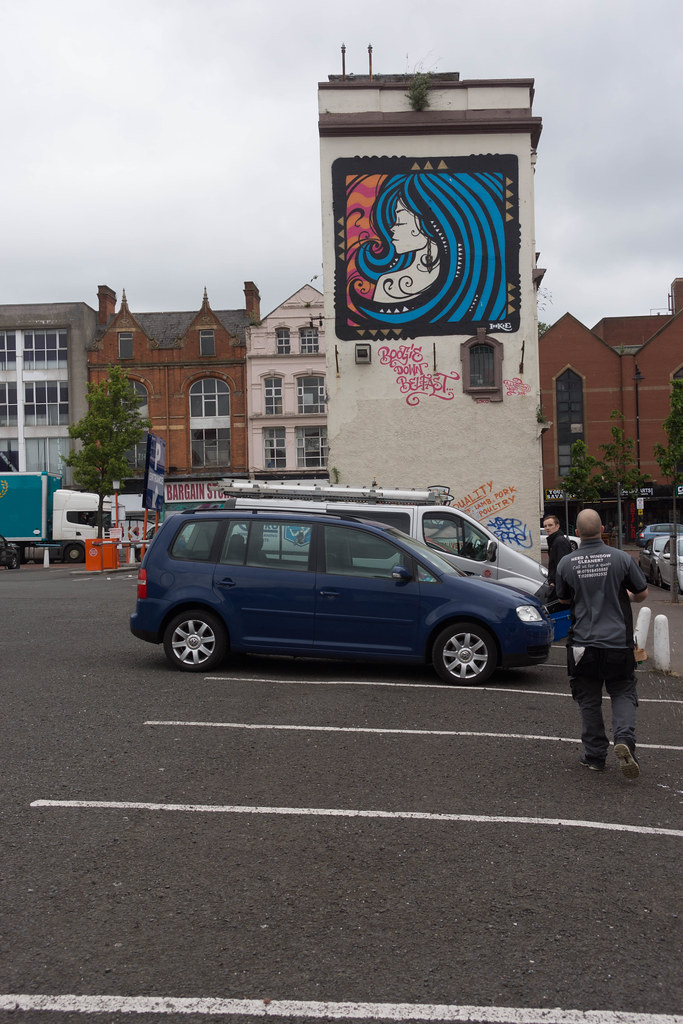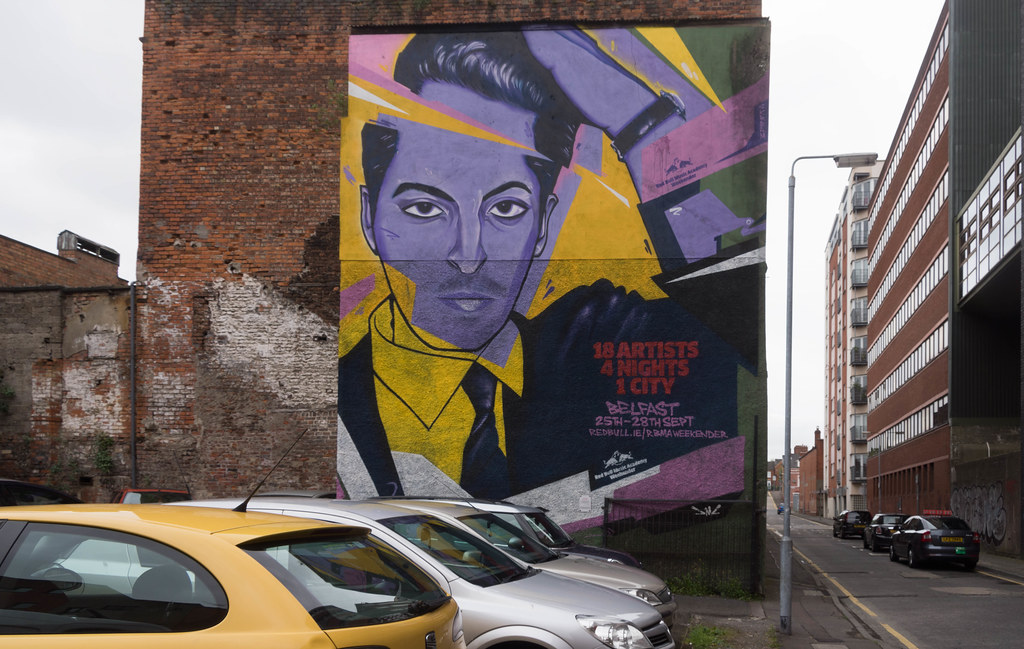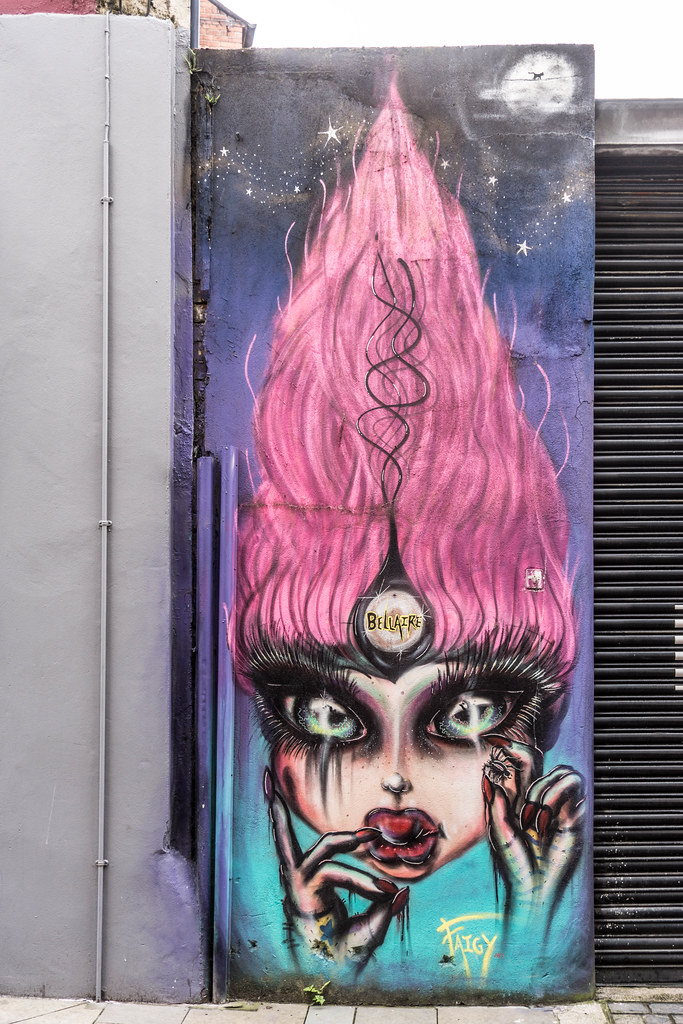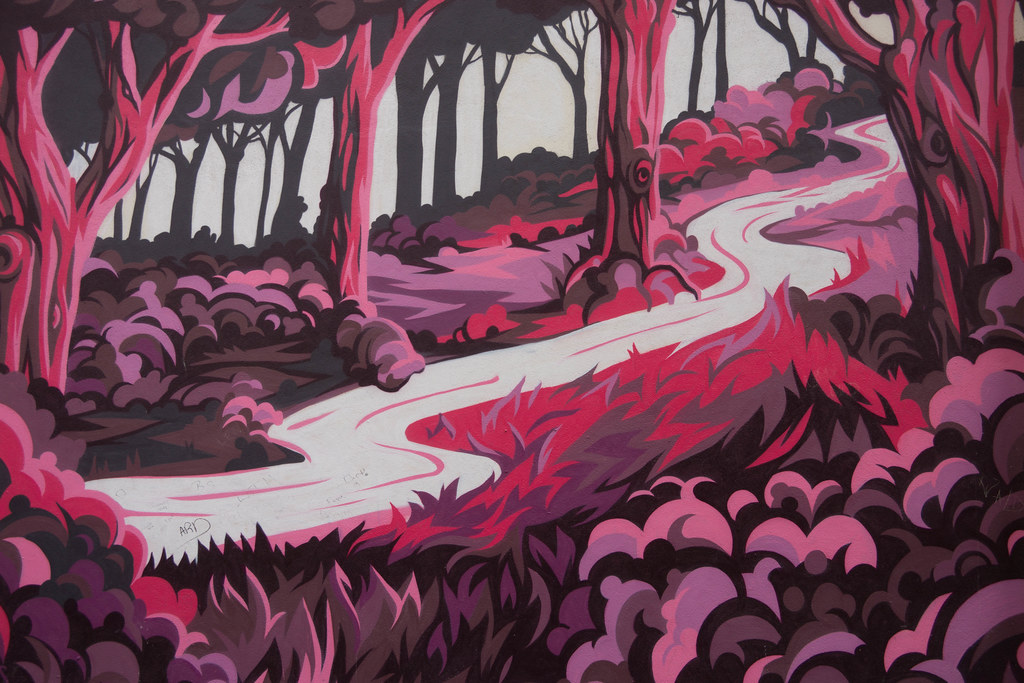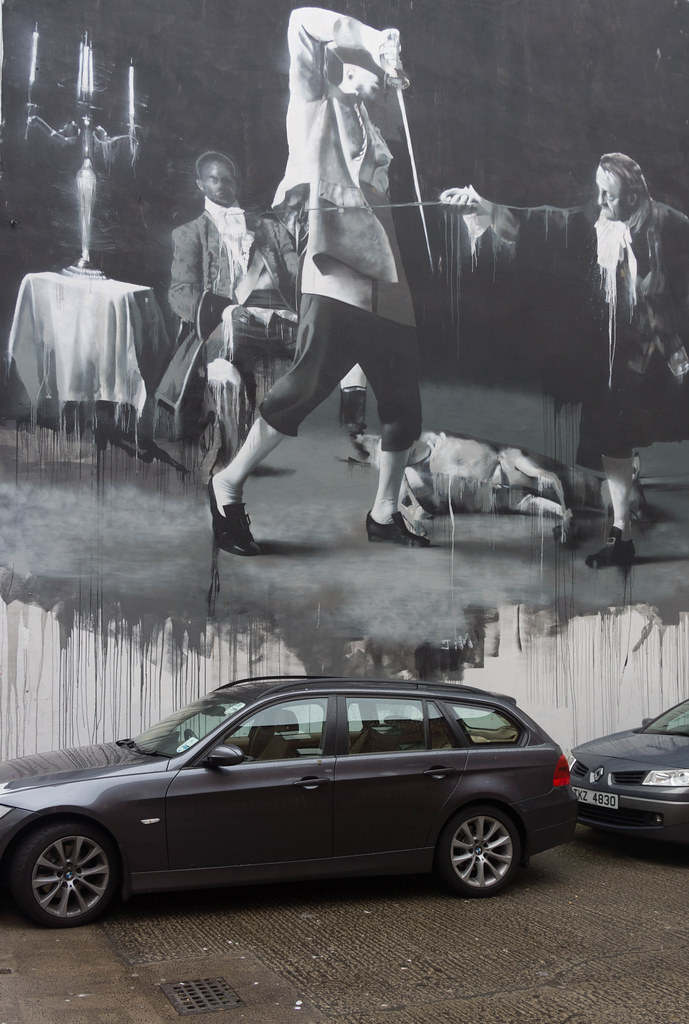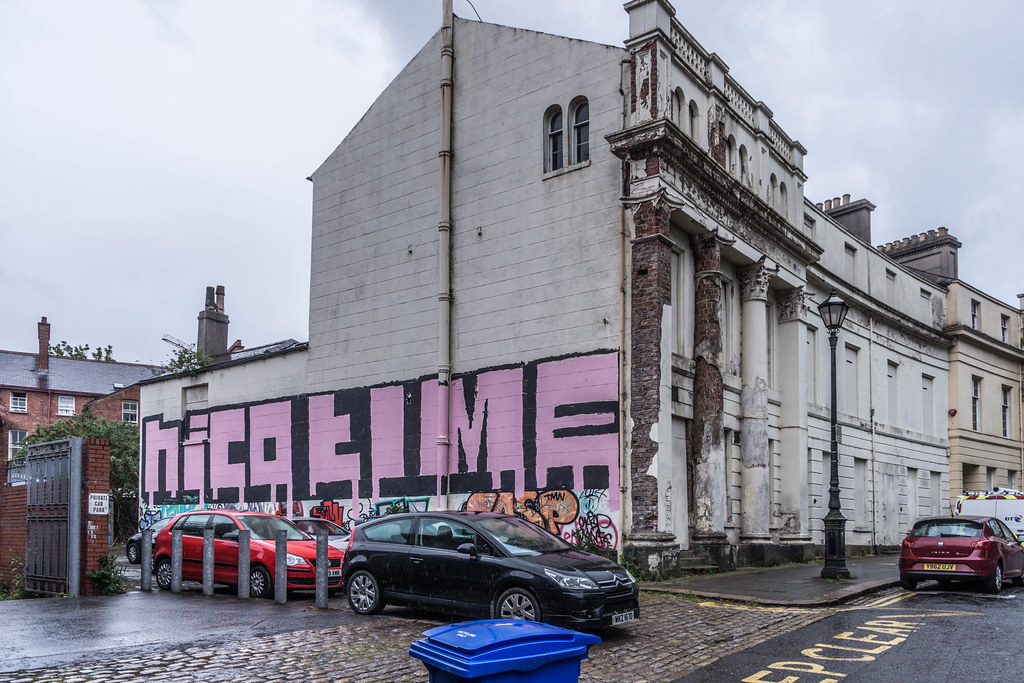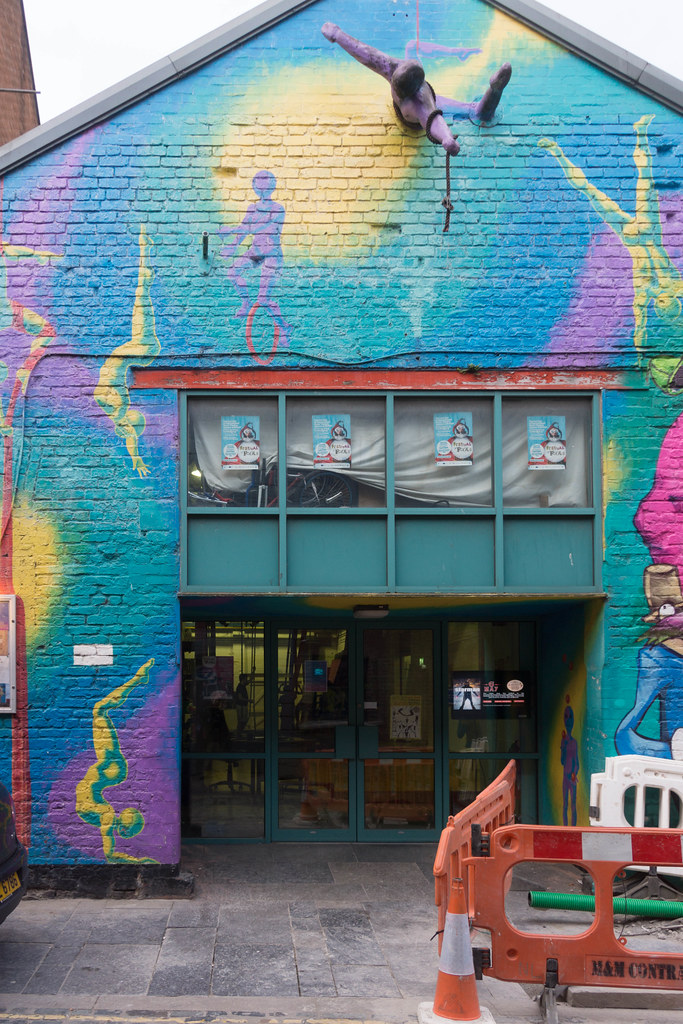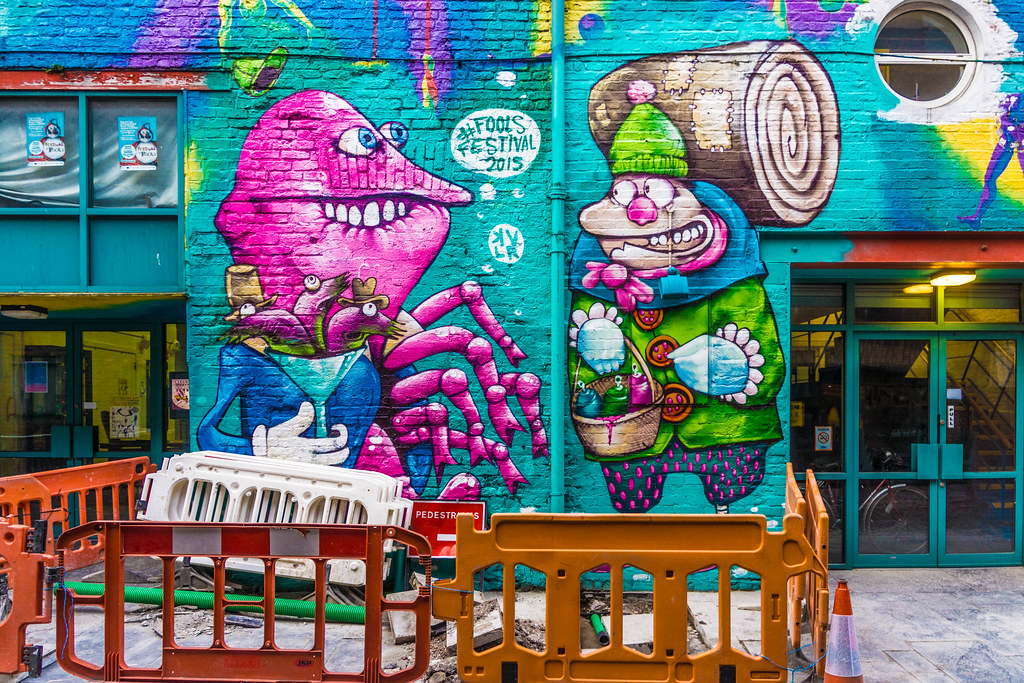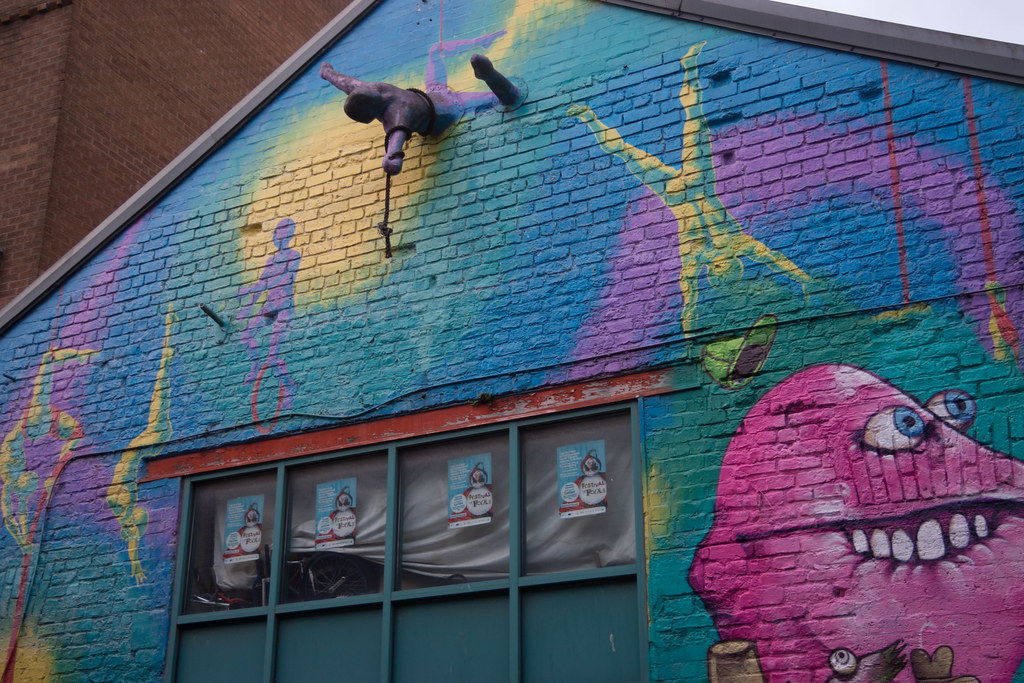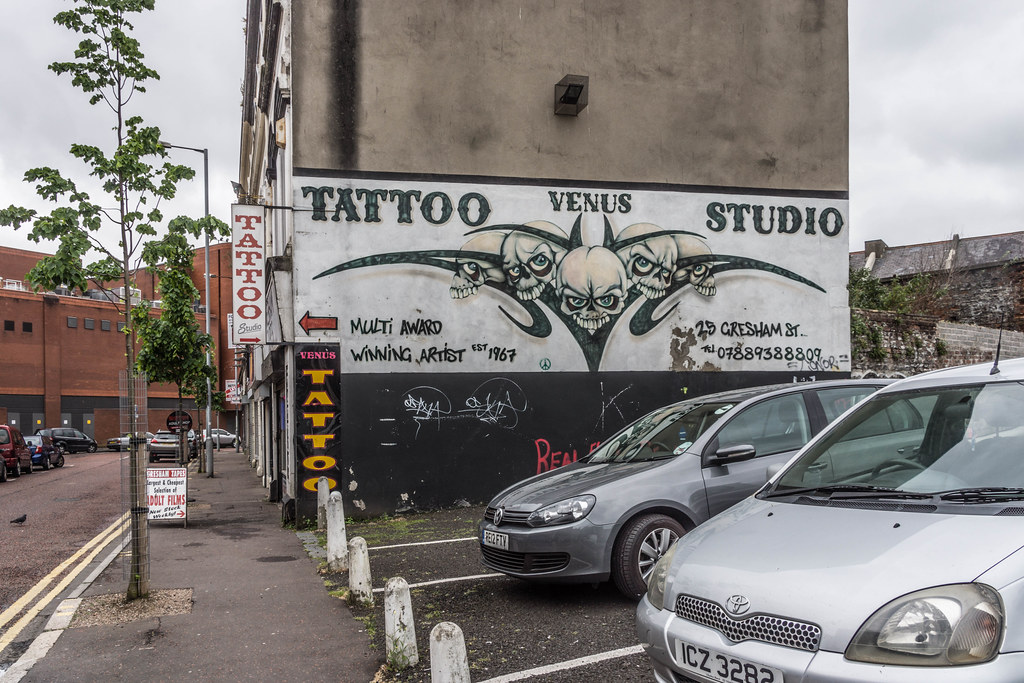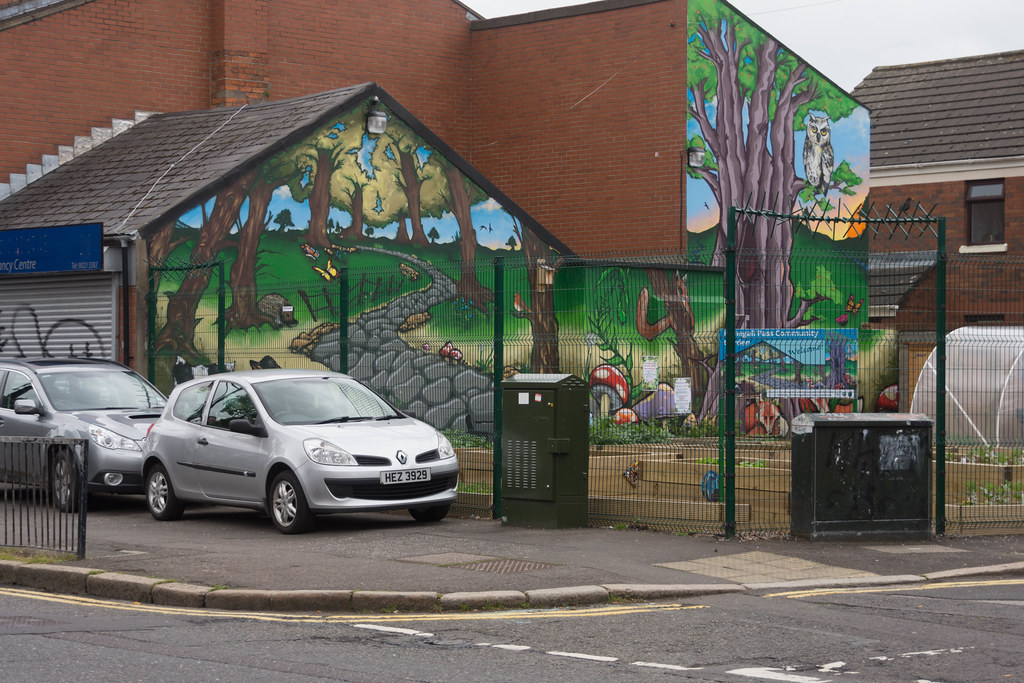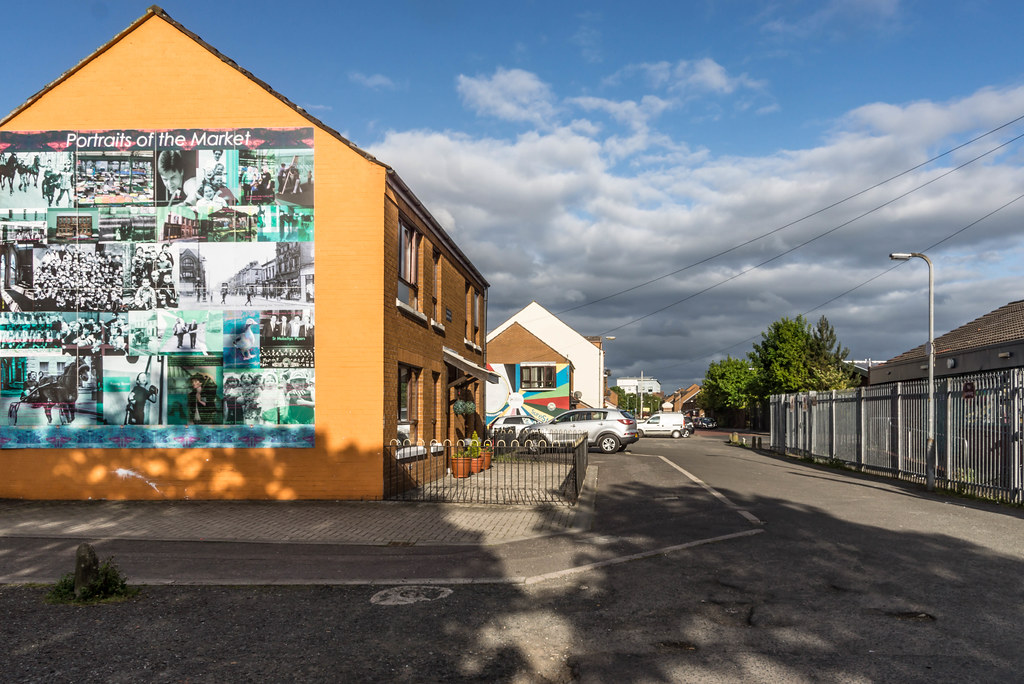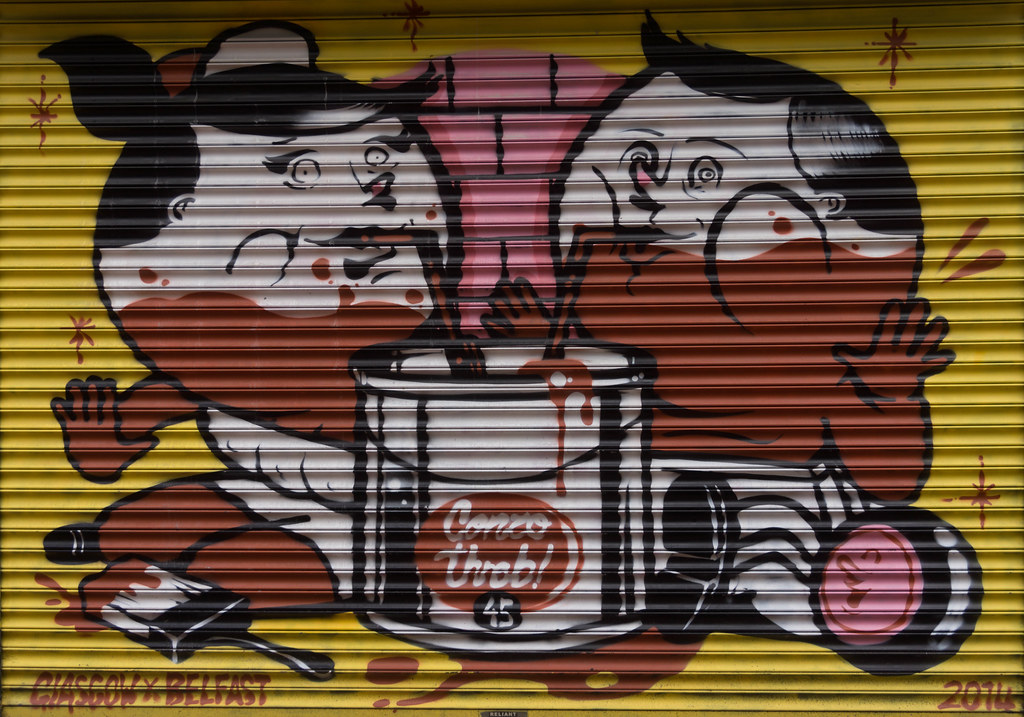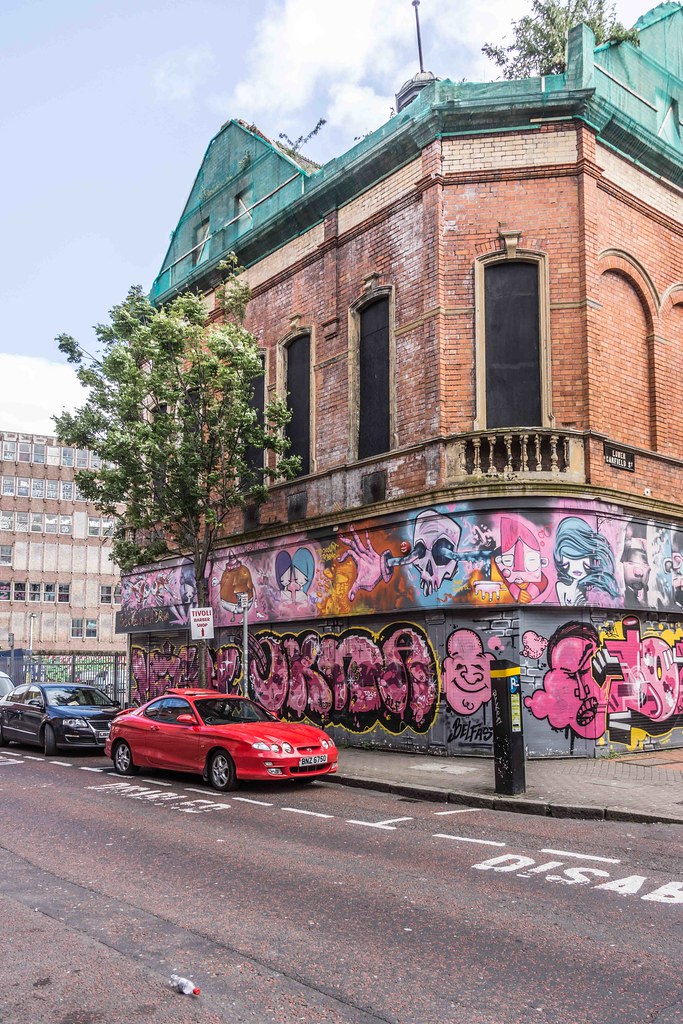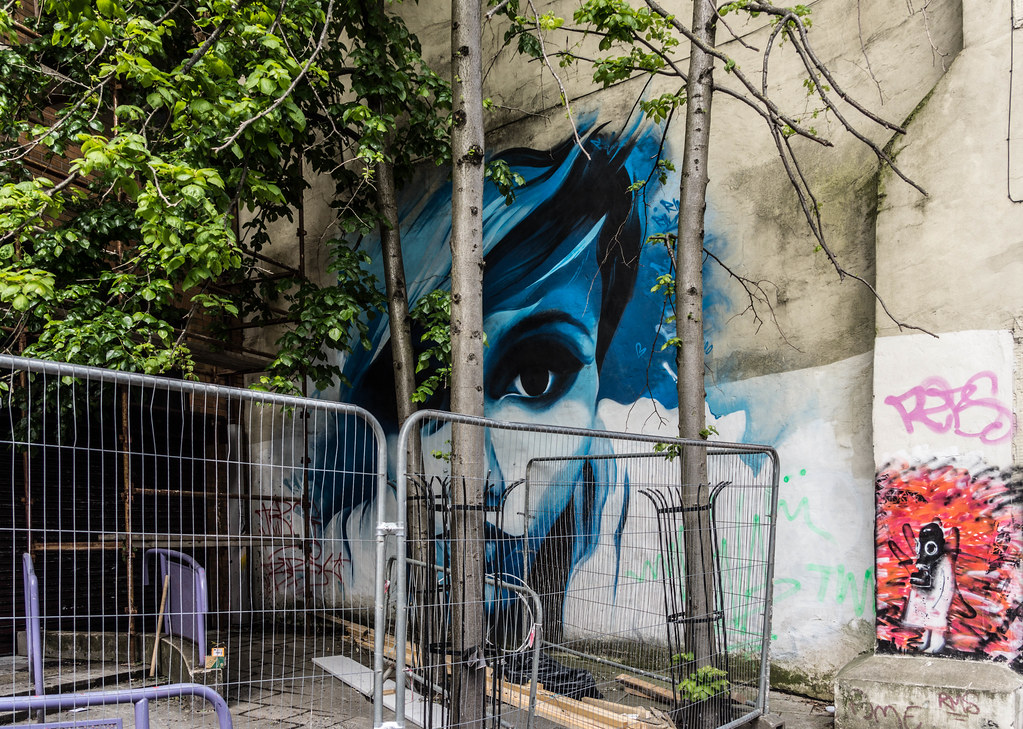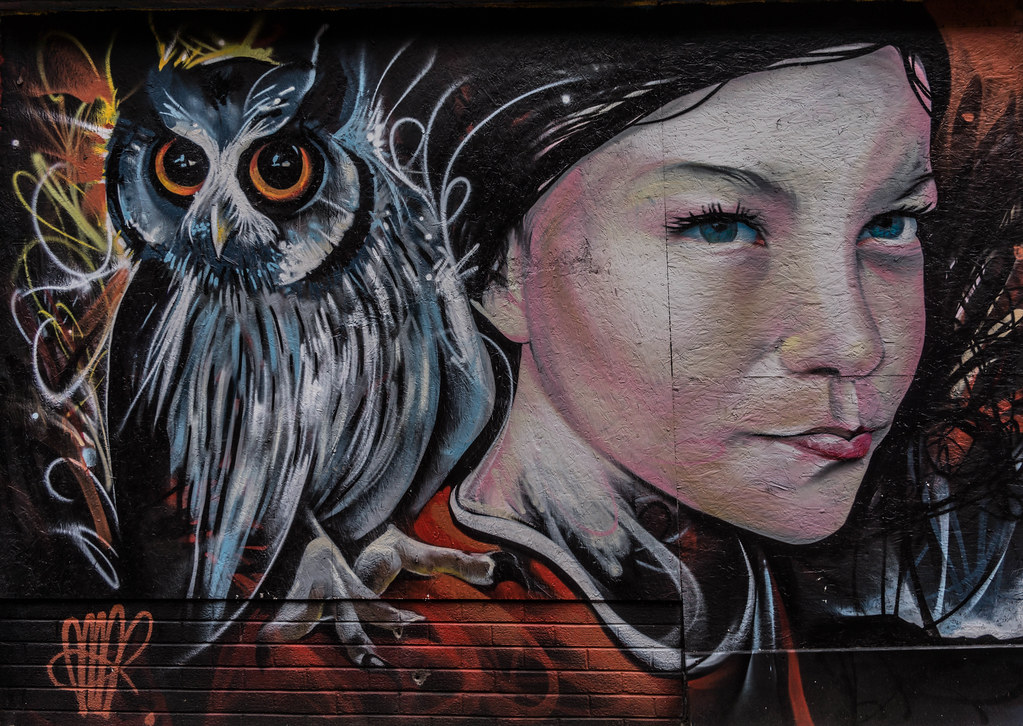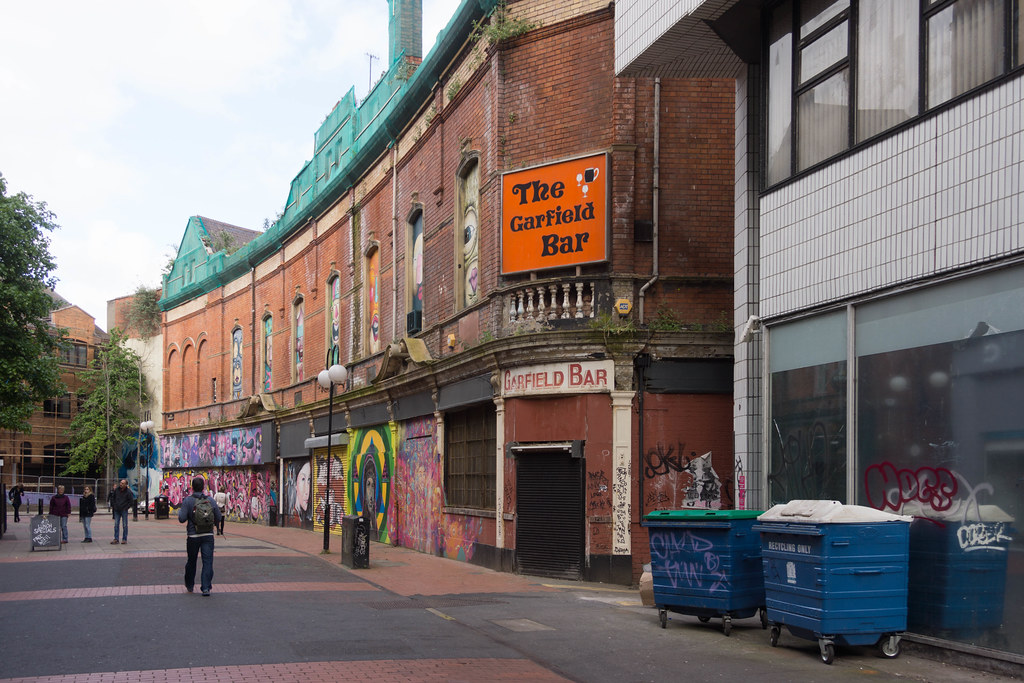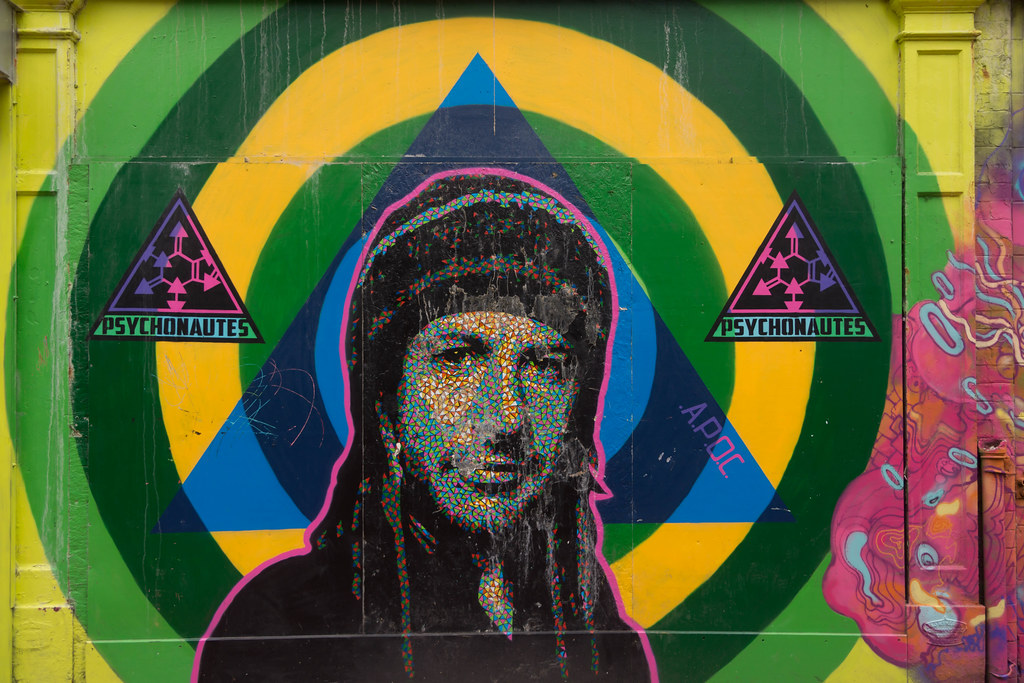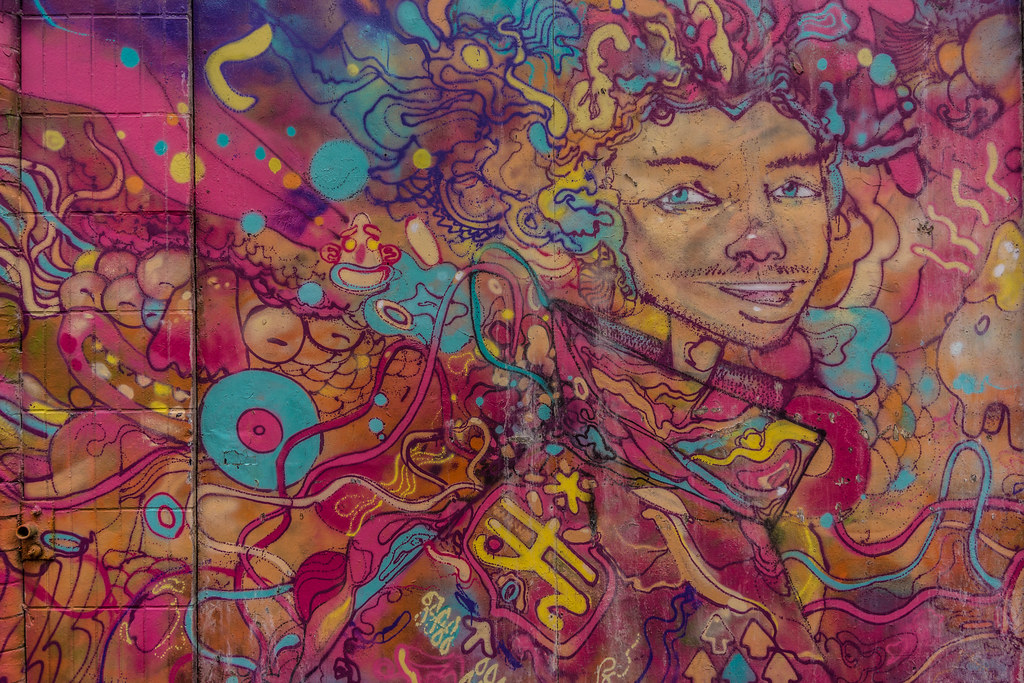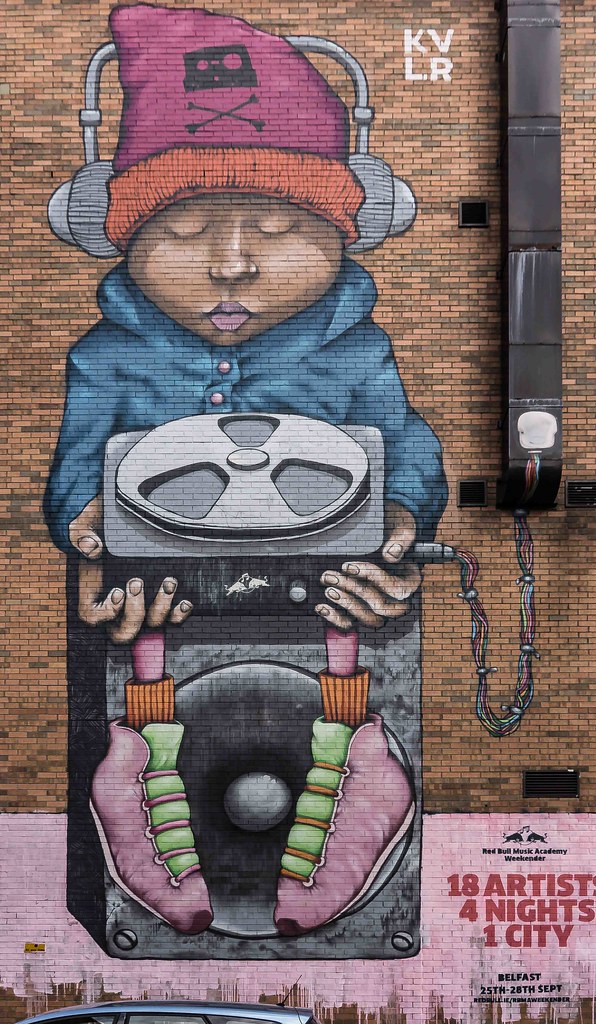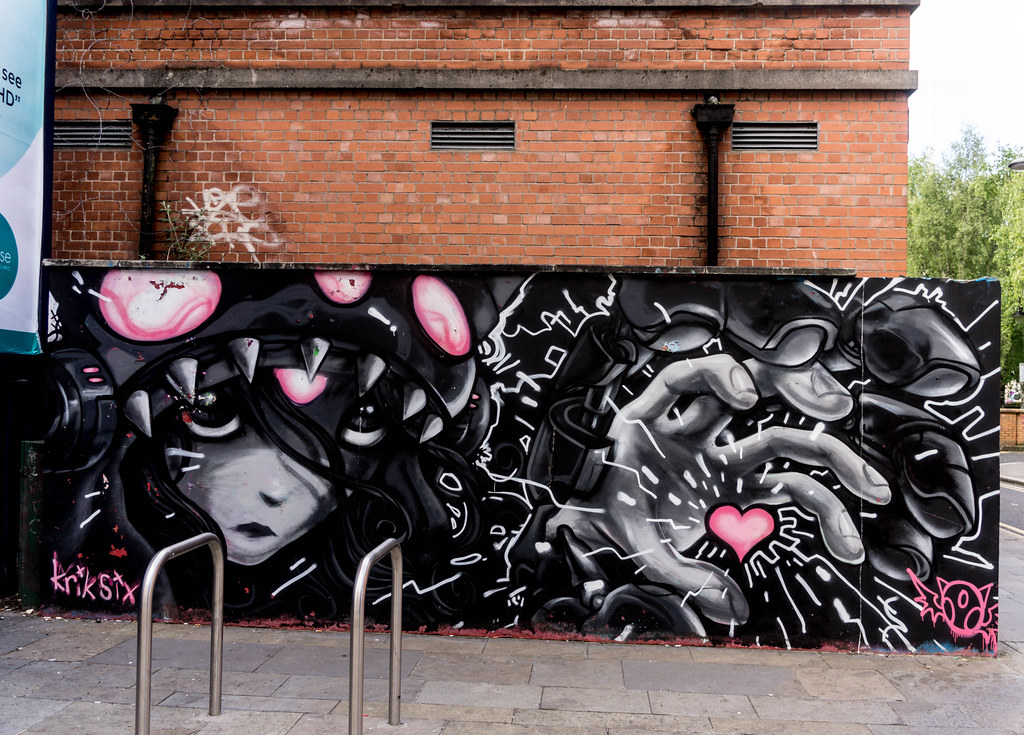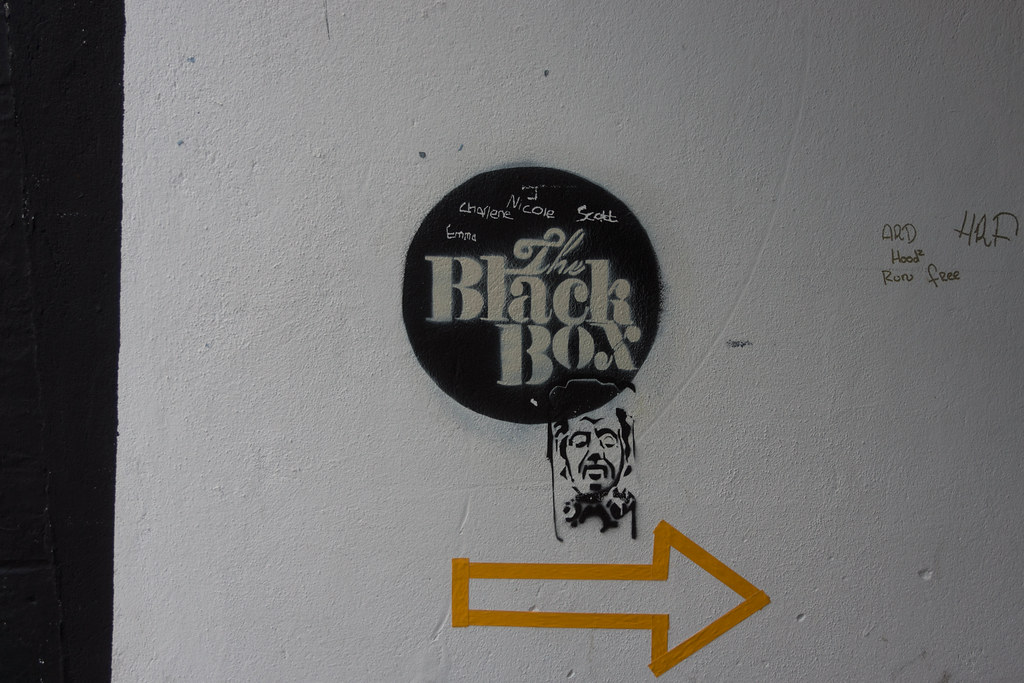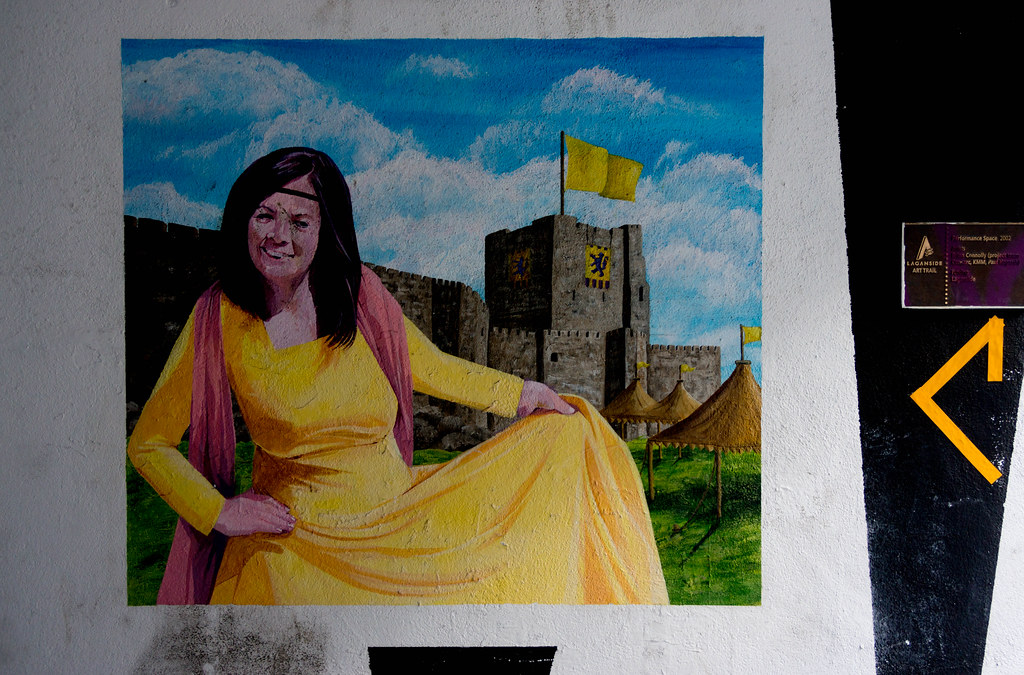STREET ART IN BELFAST
I visit Belfast at least once every year in order to find new or interesting Street Art rather than the famous murals. In general the quality of the street art is somewhat disappointing … maybe I am visiting the wrong locations.
William Murphy
STREET ART
Street art is visual art created in public locations, usually unsanctioned artwork executed outside of the context of traditional art venues. The term gained popularity during the graffiti art boom of the early 1980s and continues to be applied to subsequent incarnations. Stencil graffiti, wheatpasted poster art or sticker art, and street installation or sculpture are common forms of modern street art. Video projection, yarn bombing and Lock On sculpture became popularised at the turn of the 21st century.
The terms "urban art", "guerrilla art", "post-graffiti" and "neo-graffiti" are also sometimes used when referring to artwork created in these contexts. Traditional spray-painted graffiti artwork itself is often included in this category, excluding territorial graffiti or pure vandalism.
Artists who choose the streets as their gallery are often doing so from a preference to communicate directly with the public at large, free from perceived confines of the formal art world. Street artists sometimes present socially relevant content infused with aesthetic value, to attract attention to a cause or as a form of "art provocation".
Street artists often travel between countries to spread their designs. Some artists have gained cult-followings, media and art world attention, and have gone on to work commercially in the styles which made their work known on the streets.
Street art is visual art created in public locations, usually unsanctioned artwork executed outside of the context of traditional art venues. The term gained popularity during the graffiti art boom of the early 1980s and continues to be applied to subsequent incarnations. Stencil graffiti, wheatpasted poster art or sticker art, and street installation or sculpture are common forms of modern street art. Video projection, yarn bombing and Lock On sculpture became popularised at the turn of the 21st century.
The terms "urban art", "guerrilla art", "post-graffiti" and "neo-graffiti" are also sometimes used when referring to artwork created in these contexts. Traditional spray-painted graffiti artwork itself is often included in this category, excluding territorial graffiti or pure vandalism.
Artists who choose the streets as their gallery are often doing so from a preference to communicate directly with the public at large, free from perceived confines of the formal art world. Street artists sometimes present socially relevant content infused with aesthetic value, to attract attention to a cause or as a form of "art provocation".
Street artists often travel between countries to spread their designs. Some artists have gained cult-followings, media and art world attention, and have gone on to work commercially in the styles which made their work known on the streets.
SORRY FOR THE DELAY
MURALS
Murals in Northern Ireland have become symbols of Northern Ireland, depicting the region's past and present political and religious divisions.
Belfast and Derry contain arguably the most famous political murals in Europe. It is believed that almost 2,000 murals have been documented since the 1970s. In 2014, the book, The Belfast Mural Guide estimated that, in Belfast, there were on display. approximately 300 quality murals, with many more in varying degrees of age and decay. Murals commemorate, communicate and show display aspects of culture and history. The themes of murals often reflect what is important to a particular community. A mural therefore exists to express an idea or message and could generally be seen as reflecting values held dear to that community.
In Irish republican areas the themes of murals can range from the 1981 Irish hunger strike, with particular emphasis on strike leader Bobby Sands; murals of international solidarity with revolutionary groups are equally common, as are those which highlight a particular issue, for example the Ballymurphy Massacre or the McGurk's Bar bombing. In working class unionist communities, murals are used to promote Ulster loyalist paramilitary groups such as the Ulster Defence Association and Ulster Volunteer Force and commemorate their deceased members. However traditional themes such as William III of England and the Battle of the Boyne, the Battle of the Somme and the 36th Ulster Division are equally common.
Murals in Northern Ireland have become symbols of Northern Ireland, depicting the region's past and present political and religious divisions.
Belfast and Derry contain arguably the most famous political murals in Europe. It is believed that almost 2,000 murals have been documented since the 1970s. In 2014, the book, The Belfast Mural Guide estimated that, in Belfast, there were on display. approximately 300 quality murals, with many more in varying degrees of age and decay. Murals commemorate, communicate and show display aspects of culture and history. The themes of murals often reflect what is important to a particular community. A mural therefore exists to express an idea or message and could generally be seen as reflecting values held dear to that community.
In Irish republican areas the themes of murals can range from the 1981 Irish hunger strike, with particular emphasis on strike leader Bobby Sands; murals of international solidarity with revolutionary groups are equally common, as are those which highlight a particular issue, for example the Ballymurphy Massacre or the McGurk's Bar bombing. In working class unionist communities, murals are used to promote Ulster loyalist paramilitary groups such as the Ulster Defence Association and Ulster Volunteer Force and commemorate their deceased members. However traditional themes such as William III of England and the Battle of the Boyne, the Battle of the Somme and the 36th Ulster Division are equally common.
